With Rafael Leao leaving Lille for Milan this summer, the Ligue 1 runners-up need to act fast to find his replacement.
The Portuguese winger-cum-striker had an amazing campaign last season.
Aside from his tally of eight goals and two assists in 24 games in Ligue 1, Leao was a crucial player upfront.
His pace and power were extremely impressive.
When combined with his excellent positioning, off the ball movements, and overall technical ability he’s often far too difficult to handle.
But this summer, Lille had to say goodbye to the 20-year-old wonderboy.
The former Sporting CP forward signed a lucrative five-year deal with Milan with Lille getting paid an impressive amount of €30 million despite only getting the player for free roughly a year prior.
This deal, again, proves what a genius sporting director Luis Campos is.
He’s not just excellent at spotting talents; he’s also a smart deal-maker.
Several names surfaced in the summer as Lille looked to replace Leao.
From Watford’s Dodi Lukebakio, Paris FC’s Silas Wamangituka, and then Royal Charleroi S.C.‘s Victor Osimhen.
Each of the three had an amazing campaign last season and looked quite similar in terms of style of play albeit some differences.
Despite Wamangituka actually being the cheapest target, Campos decided to sign Osimhen who scored 20 goals and provided four assists in 36 games across all competitions for Charleroi.
We’ll take a look at how he performed last season and how he’ll fit in at Lille this season in this scout report.
In this tactical analysis, we’ll take a look at why Osimhen could potentially be the smartest signing out of the three.
Victor Osimhen Player Profile
The three Lille targets this summer all have similarities with Leao.
They all have such impressively athletic physique.
This provides them with a massive advantage in their game, especially when combined with their technical proficiency and tactical intelligence.
Osimhen has a lean body build but he looks quite muscular.
He seems to be naturally fit and strong.
The 21-year-old striker is 1.85 m (6’0″) tall and for a player his height, he’s quite agile and possesses very good body balance and coordination.
He’s a very difficult man to shrug off the ball when he’s shielding or dribbling it due to the mixture of his strength and body balance.
His good agility also means that despite his fairly large frame, Osimhen can move and change directions with or without the ball quite quickly.
The Nigeria international is also very good in the air.
Firstly, this is due to his very good jumping reach.
Aside from his tall figure, he seems to have a good core and lower-body strength as well as plyometric strength which in turn helps him generate excellent velocity which launches him quite high vertically.
Secondly, he seems to also have a quite good upper-body strength and body balance which make him quite solid in the air.
All of these coupled with his good reading of the game, positioning, and movements make Osimhen a genuine threat in the air upfront while also being extremely useful defensively.
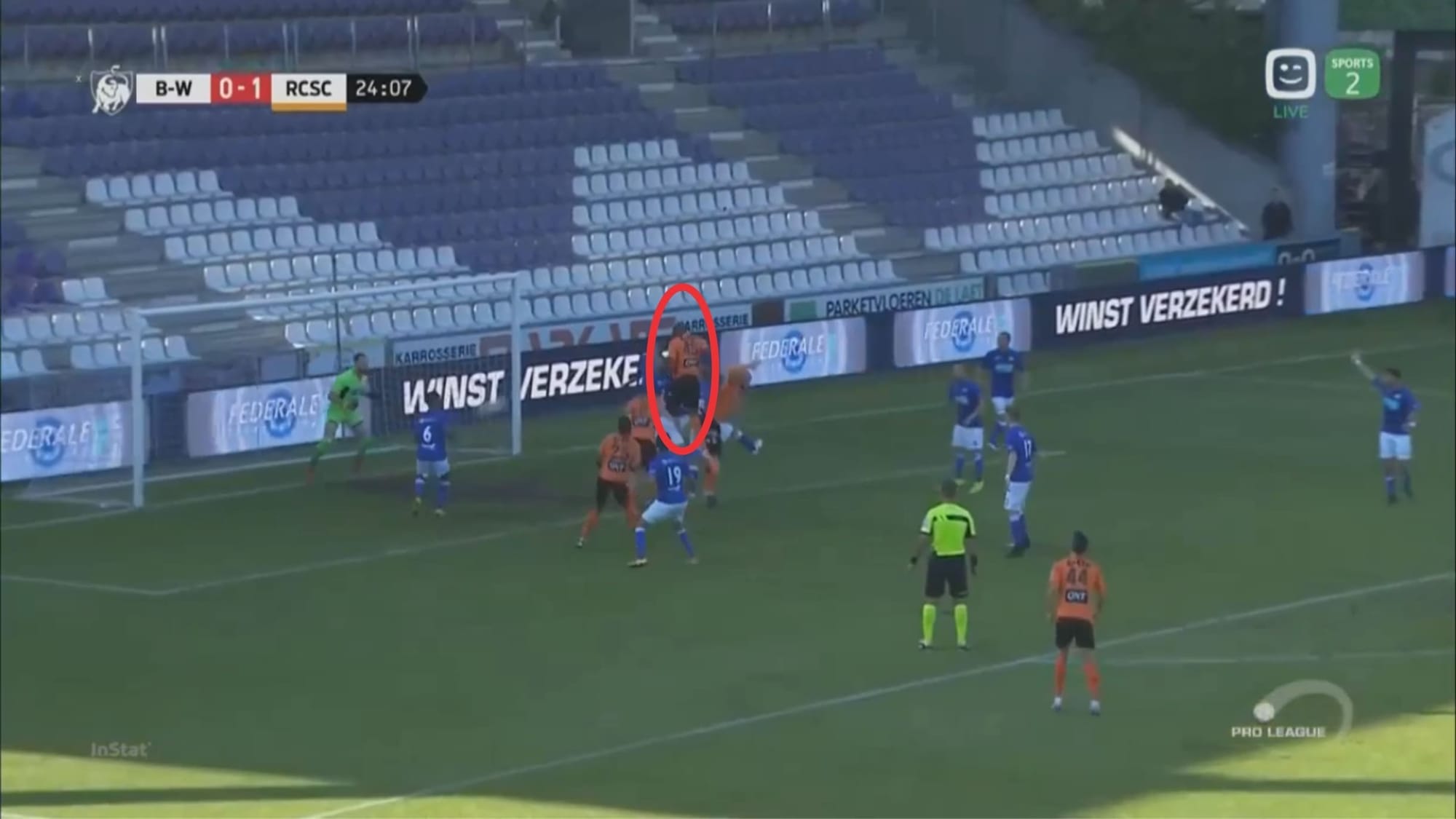
Osimhen made an impressive amount of 13 aerial challenges per game on average last season and he managed to win around 42% of them.
This means that he’s not just actively making aerial challenges, but he’s also winning a good amount of them.
RB Leipzig’s Yussuf Poulsen, who is also a towering player and very good in the air, averaged around 10 aerial duels per game last season, winning 46% of them.
This is vastly different than Lille’s former striker Leao who only averaged 3.9 aerial duels per game last season although he had a higher success rate of 50%.
This means Lille now have not just a pacey and powerful striker who can be a threat on the ground but also in the air – which looks like something that Leao (despite his also tall stature) is a bit lacking.
Aside from his physical strength, Osimhen also possesses a very impressive amount of pace.
Again, due to his outstanding power and explosiveness, Osimhen has this quick burst of acceleration, helping him to reach his top speed much quicker and providing him with the advantage in a short-range race.
Not just short-range, his blistering pace can also be seen as he’s racing to the ball in medium and long-range, making him a very good counter target as he can almost always win the race against defenders when the ball’s passed into space.
Victor Osimhen Ball Control & Dribbling
Osimhen seems to have decent ball control.
He seems to be fairly comfortable receiving the ball with his chest or either foot and often the touch looks quite good and the ball doesn’t stray too far away from him.
However, other times the exact opposite happens; a poor first touch and the ball goes too far.
Due to his impressive acceleration and top speed, Osimhen often can make it up by quickly chasing the ball and reaching it first.
He has decent skills on the ball and occasionally can be seen utilising it smartly, especially when he’s isolated or in a tight space.
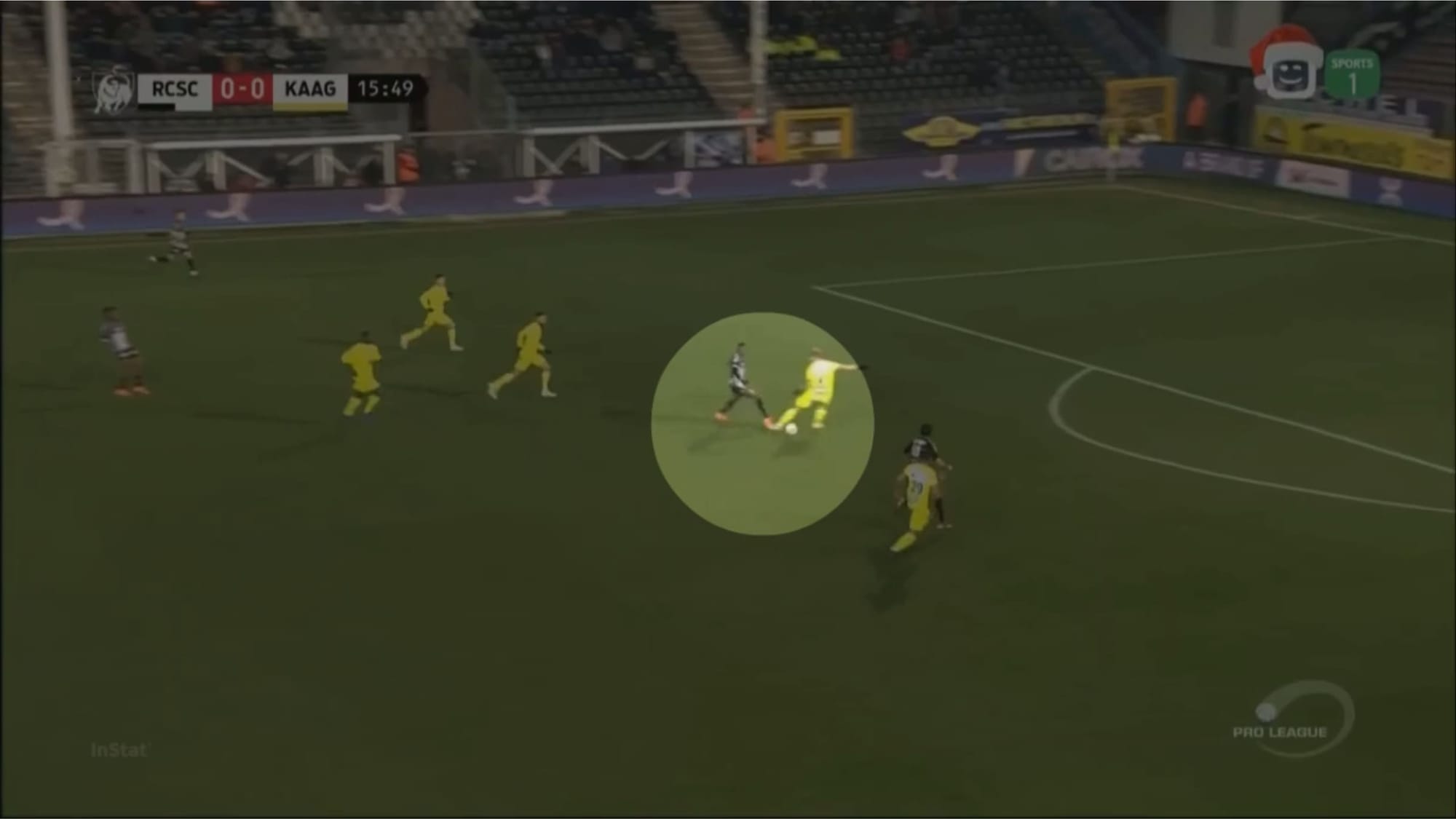
Unlike Leao (who’s quite good at dribbling), Osimhen’s dribbling skills are simply decent.
Most often he’d try to knock the ball to one side or past the opposing defender to get through, no fancy skills and all.
Quite straightforward.
Statistically, Osimhen recorded an average of four dribbles per game last season with a success rate of 47.5%.
Leao, on the flip side, recorded a lesser number with only 2.2 dribbles per game albeit with a higher success rate of 60%.
Victor Osimhen Distribution and finishing
The 20-year-old striker is not a very good passer.
He already has the strength and knows where to position himself, however, his distribution isn’t very good and this is certainly something he needs to improve if he’s to be a good link-up player.
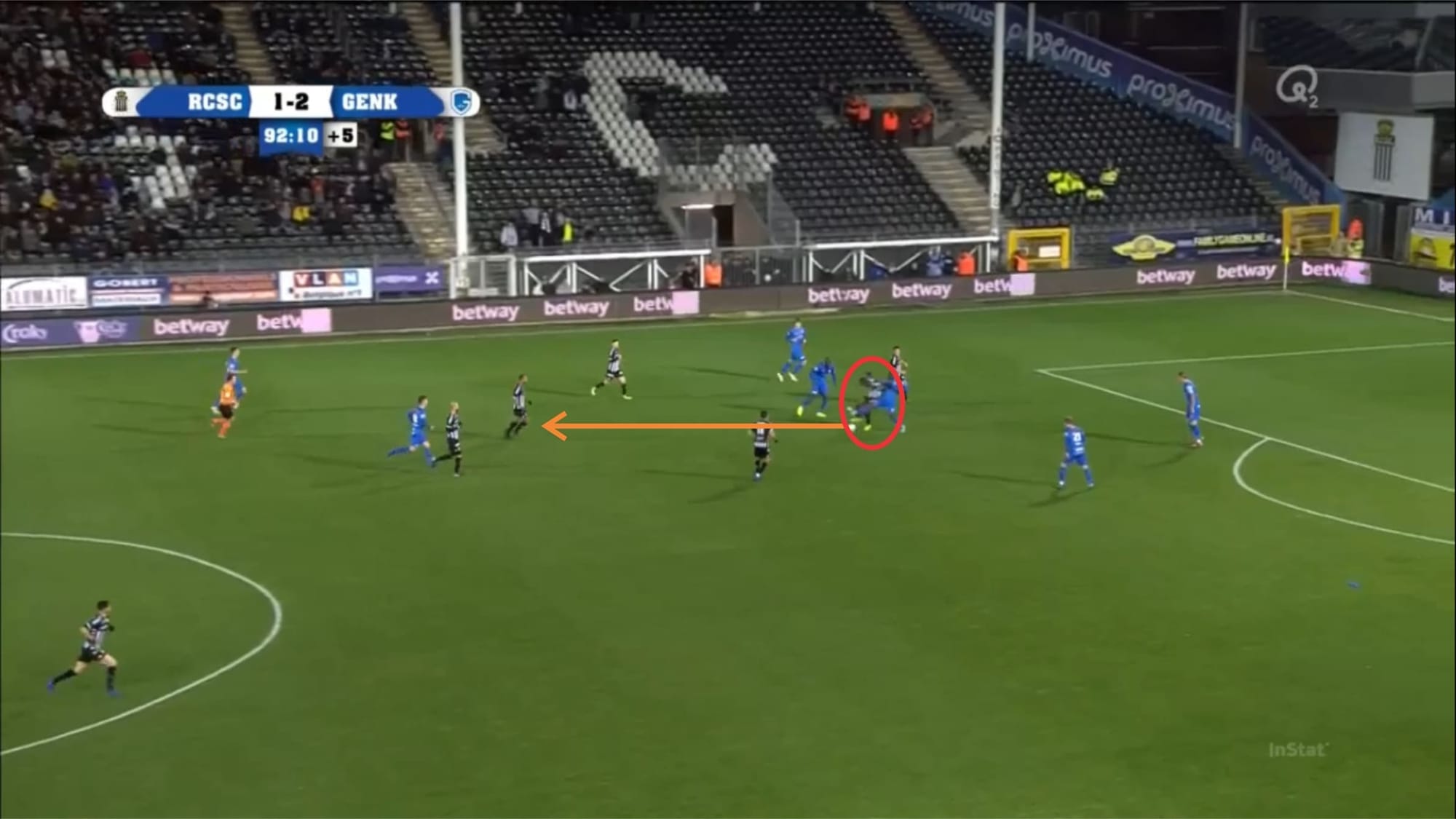
Osimhen made an average of 21 passes per game last season but only 66% of them were accurate.
Leao, meanwhile, is slightly better in passing with his record of 75% accuracy last season although he averaged a much lower amount of passes with only 14 per game.
Osimhen needs to do better in controlling the amount of power he uses to pass the ball as well as directing the ball towards his teammate.
Most of his passes aren’t well-weighted and often make it hard for his teammates to control or get to.
However, despite his not-so-impressive passing ability, the Super Eagles striker is an excellent finisher and there are reasons why.
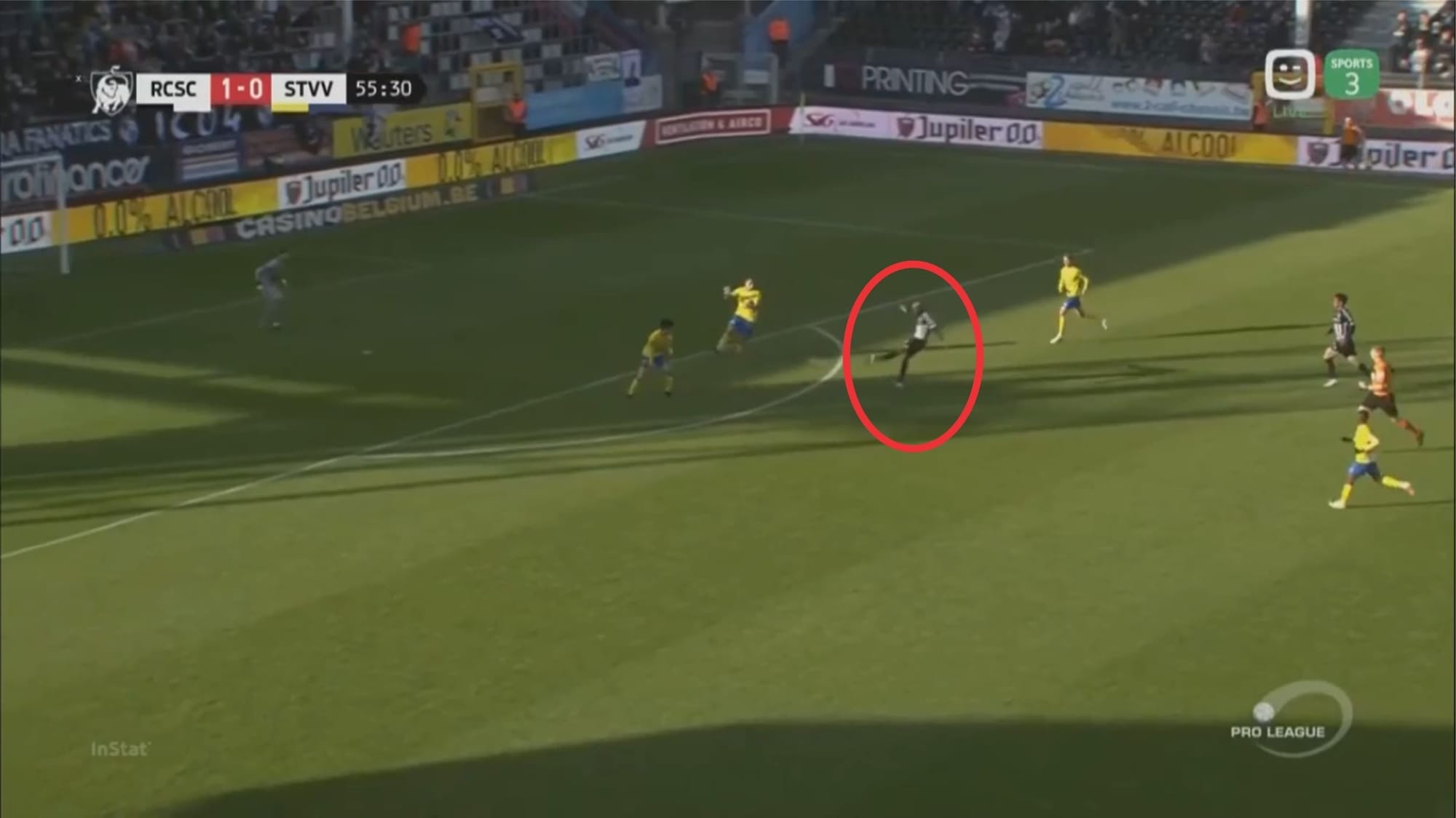
Osimhen is an excellent striker of the ball.
He’s able to take shots with his left just as well as his right which is his stronger foot.
His shots are powerful and accurate due to the combination of his power and shooting technique.
The 20-year-old forward took an average of 3.6 shots per game last season with quite an impressive accuracy of 50%.
He even had an average of 0.5 xG per game while actually scoring the roughly the same amount (0.55) per game.
Leao, on the other hand, took far fewer shots with only 1.4 per game but recorded a higher accuracy of 57%.
Both forwards are quite good shooters.
Lille shouldn’t worry so much about missing out on goals this season as Osimhen can surely provide them with what they need.
Osimhen is more than just a splendid striker of the ball.
He’s a clinical striker who can convert chances effectively.
Osimhen is calm and composed when in a one-on-one situation with the goalkeeper.
He doesn’t seem to tend to chip the ball over the goalkeeper but would instead try to pick a corner and shoot or try to dribble past/get around the goalkeeper before taking a shot.
Due to his burst of acceleration, quick reactions, and his ability to be in the right place at the right time, Osimhen should be a sufficient replacement, if not an upgrade from Leao at Lille.
Victor Osimhen Positioning & movements
What makes Osimhen a really good striker and can potentially take him to another level are his intelligent positioning and off the ball movements.
As mentioned previously, he’s a clinical striker, a fox in the box, but despite his excellent instinct in front of goal and his impressive finishing ability, he can’t be a good striker without the ability to position himself or move to the right place at the right time.
Fortunately, this is actually something that Osimhen is quite strong at.
First of all, take a look at his heatmap last season below.
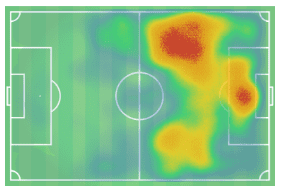
From the heatmap above we can see that Osimhen is very active around the final third.
He doesn’t drop down a lot in the middle but he is quite active in linking up the play in the wider areas.
He seems to roam wide quite often with the tendency of going to the left side of the field.
When his team is in a defensive phase he’d often stay rather high and sit in the half-space.
A lot of other times he’d also stay central.
When the ball is won, his teammate would launch a long ball into space behind the backline for him to chase.
By sitting in the half-space that means there’d only be one defender who’d be guarding against him as full-backs would usually go forward to help out the attack.
By staying the half-space, Osimhen could also anticipate and quickly get to the passes that are directed into the flank as well as to the centre.
Or, he could also drag and split the two centre-backs when in the transition to attack, allowing his teammates to exploit the game when they’re on the break.
This is very much different than Leao who’s much less active when playing as a striker for Lille last season.
Take a look at his heatmap below.

As you can see from the heatmap above, Leao seems to be much less active than Osimhen.
However, there seem to be some yellow-ish patches near the halfway line in the middle and in both sides of the flanks.
This shows that Leao tends to drop deep and roam wide as well to help link up the play.
Unlike Osimhen though, Leao has the tendency to move to the right side of the pitch.
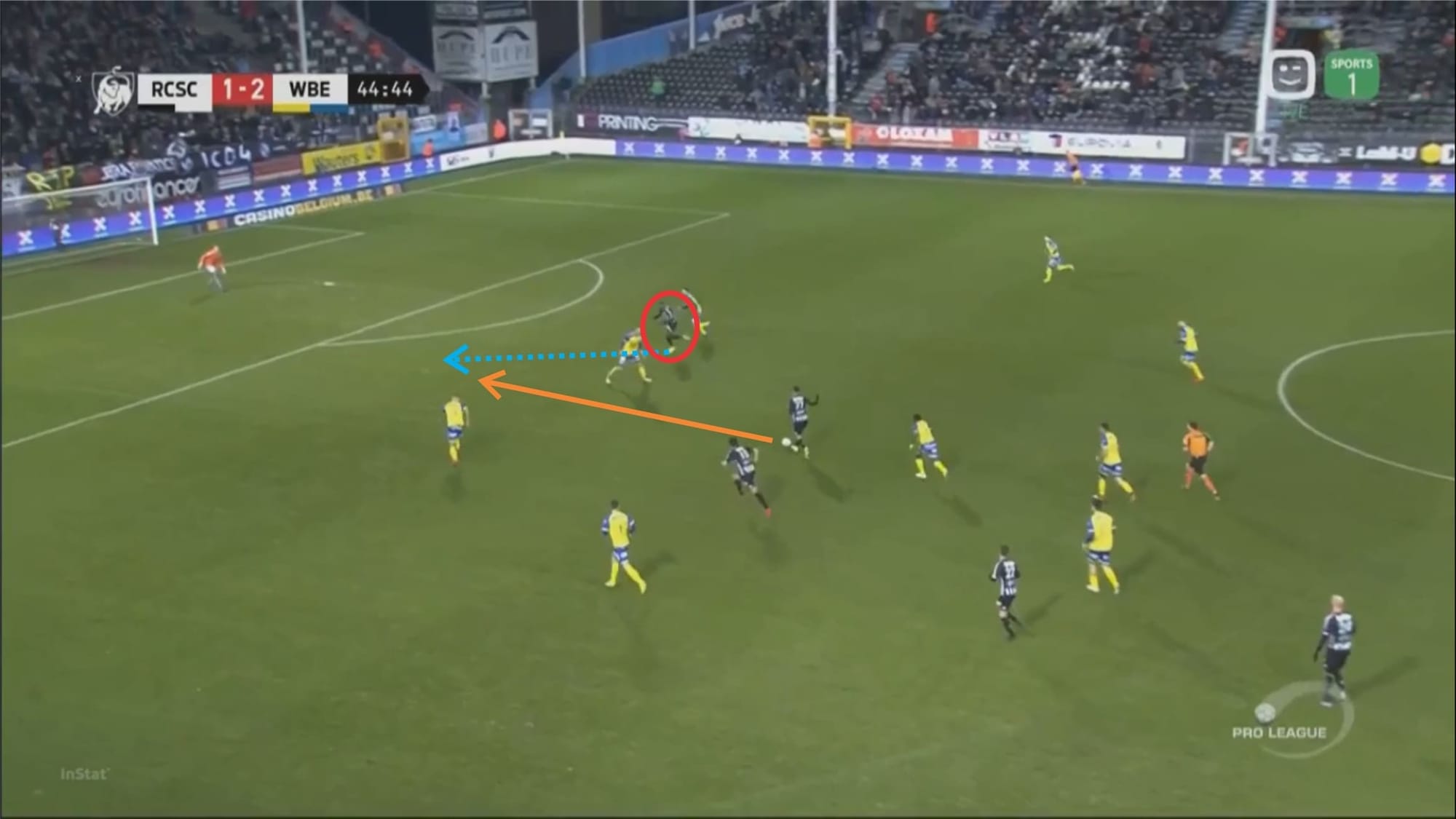
Osimhen’s movements without the ball seem to have improved a lot since his days in the youth side of Wolfsburg.
He seems to be much more aware of his surroundings and he times his dashes quite well.
However, he hasn’t seemed to have perfected his craft yet.
He’s caught offside once per game on average last season which is still a rather poor number.
Sometimes he still moves too early and sometimes too late – although when he’s late he can always catch up with the ball using his blazing pace.
Leao, for comparison, was only caught offside five times in a total of 33 games across all competitions last season.
That means he averaged 0.15 offsides per game which is an impressive number.
Now looking at the picture above, we can see that Osimhen’s quite good at playing off the shoulder of the defender.
Osimhen seemed to try to move to the blind side of one defender (ball-near defender), dragging the other defender (ball-far defender) with him while shaping his body in a such a way that he seemed to be ready to make the run to exploit the space behind the defence.
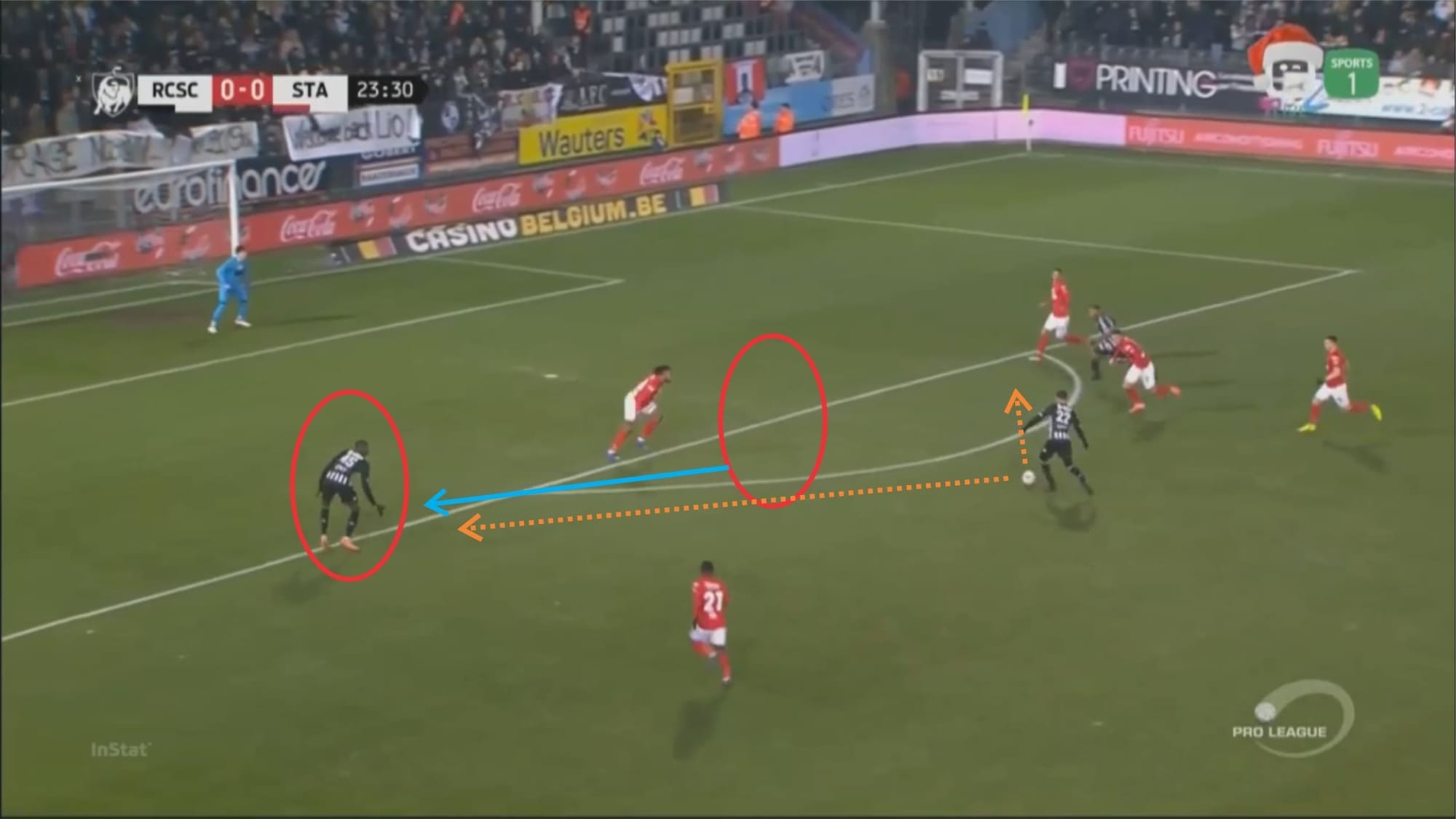
The picture above is also a testament of his intelligent positioning and off the ball movements.
Osimhen moved from the centre to the half-wide space at the edge of the box.
This confused his direct defender as he then needed to decide whether to keep marking him or leave him and block the path of the ball-carrier who can potentially shoot the ball with a clear vision of the goal.
This essentially freed him from his marker, opened up space for his teammate to shoot or give the ball to his other teammate who also seemed to make an inward run into the box in the picture.
In this situation, his teammate gave the ball to Osimhen who took a shot at goal but was denied by the goalkeeper.
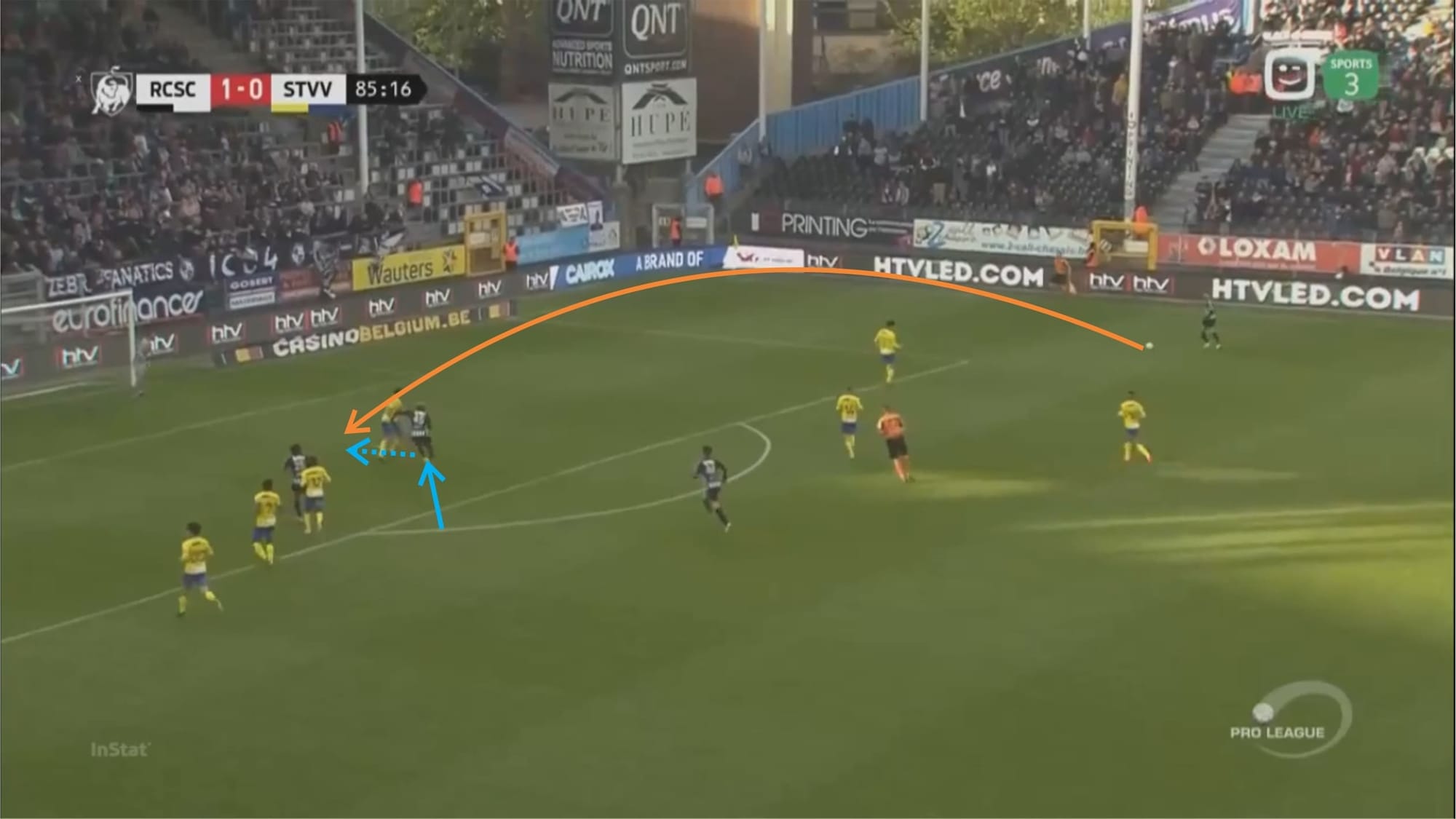
His movements inside the box also prove that he’s certainly the kind of player you’d want to mark with multiple players.
When preparing to receive his teammate’s delivery inside the box, Osimhen tends to make two runs: one to make the defender thinks he’s going one way and the other one is to get into position to receive the ball.
In the picture above you can see that Osimhen’s moving one way, dragging the defender with him.
With perfect timing, he then immediately feinted and changed his directions, utilising his agility in the process.
This action freed himself from his direct marker leaving him free inside the box.
In this situation, he’d then receive the ball in the middle of the box, around the six-yard box and headed the ball straight to the goalkeeper who in turn spilt it.
Osimhen’s teammate then pounced on the rebound to score the goal.
How Victor Osimhen Fit In At Lille This Season
Christophe Galtier mainly used 4-2-3-1 last season although there were times where he’d switch to a classic 4-4-2 or 4-3-3.
Here’s how the lineup may look like with Osimhen in it.
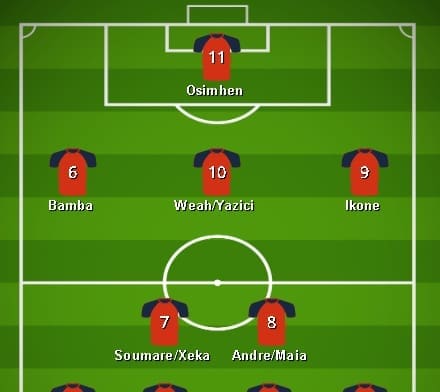
Osimhen does play a certain way in Charleroi as have been mentioned earlier in this article (in the positioning and movements section).
This is perhaps partly due to the coach’s tactical instructions and the player’s own tendency.
At Lille last season, the two wingers are much, much more active than the main striker in the middle as they’d pretty much everywhere around the pitch, dropping deep, cutting inside, or hugging the touchline and delivering a cross from the byline.
The main striker (Loic Remy/Leao), meanwhile, tended to stay forward and central, although they could occasionally be seen moving around to wider areas and dropping slightly deeper to help link up the play.
This is certainly to be expected with Osimhen leading the line.
This could surely mask his weakness in distributing the ball and further amplify the use of his striker’s instinct upfront.
Lille are also a team who play high defensive blocks against teams of a lower or similar level.
The attacking midfielder would help Osimhen in giving aggressive pressure to the backline.
His high work rate will be used more defensively in Lille as he’d be more actively involved in pressuring and challenging the opponents, becoming a nuisance as they’re trying to build up.
In the transition from defence to attack, Lille didn’t seem to rely much on Leao or Remy last season, but rather utilising the speed of their wingers (Nicolas Pepe and Jonathan Bamba) to break quickly.
Leao or Remy would often hold their position, dragging the defender with them, and then holding them off, acting as a well.
The playmaker would give the ball to the striker who’d bounce it back to the playmaker who’d, in turn, deliver the through pass/pass into space for the winger to run onto.
Leao then would make a late run into the box either to receive a potential delivery from his teammate or pounce on the rebound.
So, the counter target was essentially the winger.
This is different from when Osimhen was in Charleroi, as he’s actually used as the main counter target.
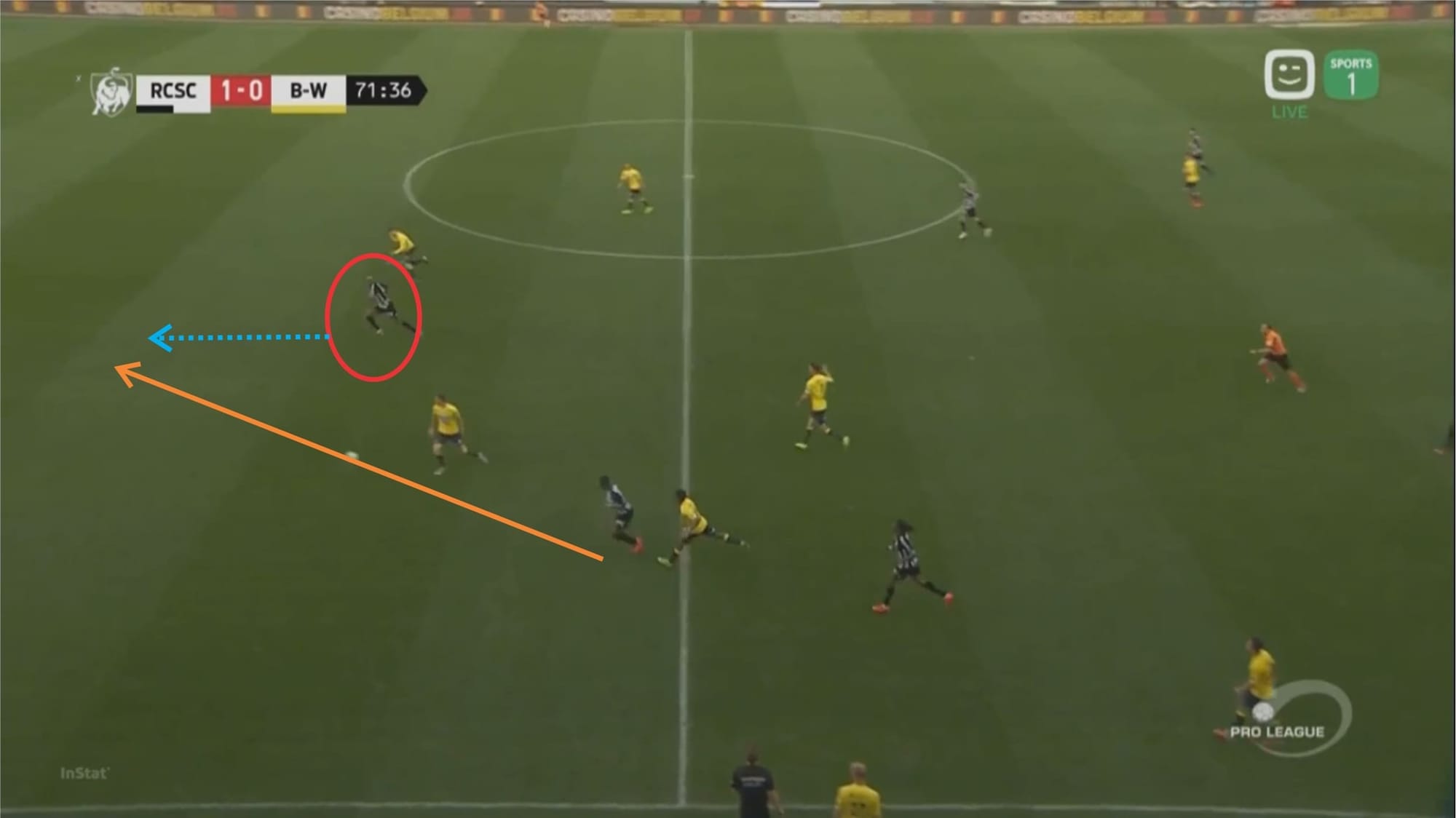
When on the counter, Osimhen would immediately make the attacking run to exploit space behind the defence, trying to get to the end of his teammate’s pass instead of holding his position and acting as a wall while letting the wingers make the run on either side of the flank.
We’d still have to take a closer look at this season as to how Galtier will use him on the counter.
There’s a chance that there’ll be a slight change in the way Lille break forward on the counter this season with Osimhen being the main target mainly due to the player’s rather weak first touch and distribution ability, meaning that he may not always be successful in delivering first-time passes when acting as a wall.
However, this is certainly something that he could certainly improve in and we might as well see the same counter-attacking tactics being employed again this season.
Conclusion
Charleroi made the smart move to make Victor Osimhen‘s move permanent for €3.5 million on 31 May 2019.
This is so that they’d be able to take the profit – which they eventually did after selling him again to Lille for €12 million on 1 August 2019.
It is a win-win decision though for both clubs.
Charleroi got themselves a decent profit for the player who served them well and brought them success last season.
And Lille got themselves an excitingly talented striker to replace Leao at the club for what can be called a bargain fee.
Both players may look similar, but in this tactical analysis, you can see that they’re actually a bit different.
It also seems like Galtier may use Osimhen differently this season.
Hopefully, Osimhen will be able to integrate quickly to Galtier’s tactics at Lille so that we’ll be able to see how good he is in this system and how high his ceiling can go.

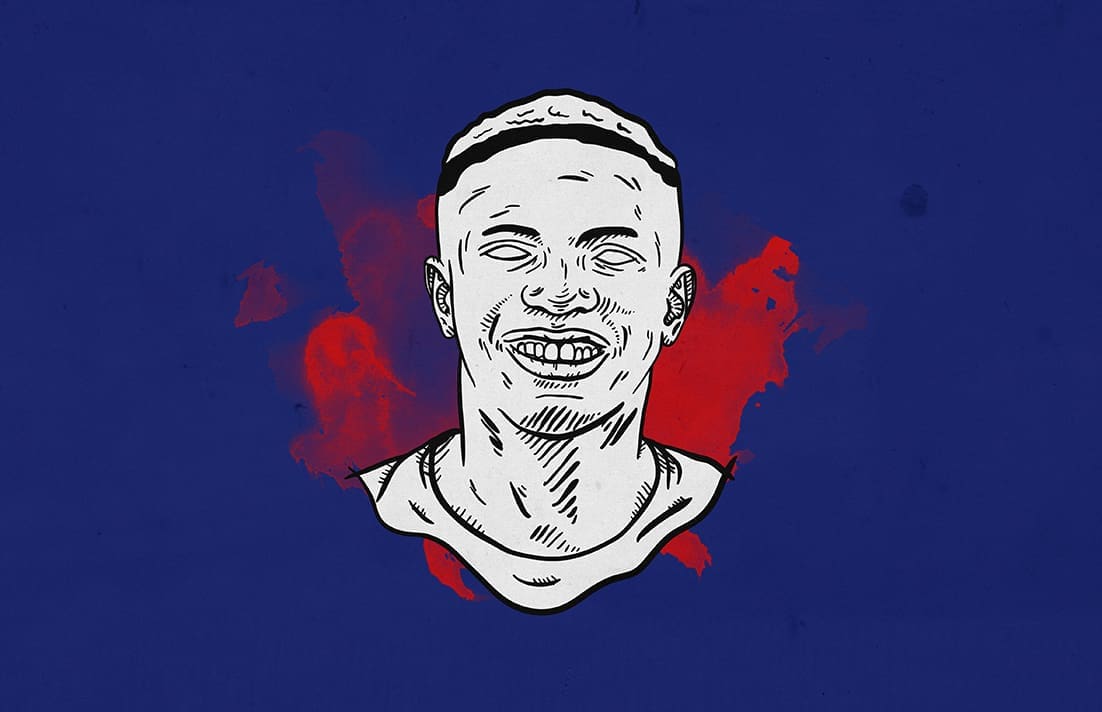

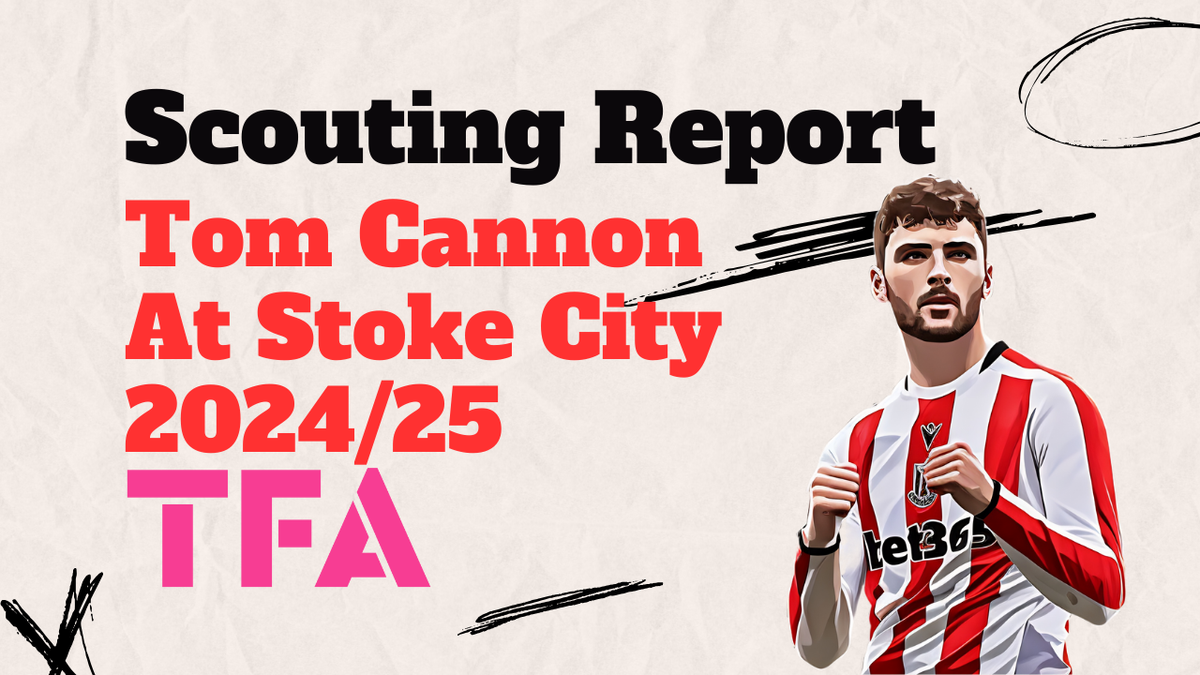
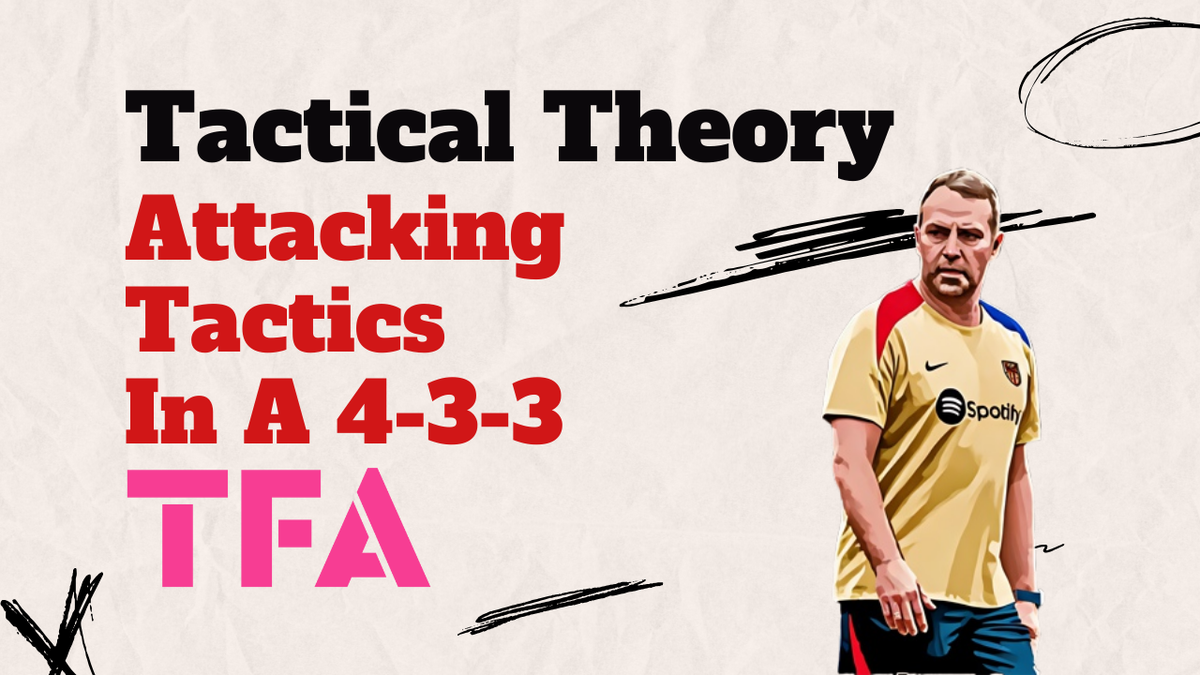
Comments